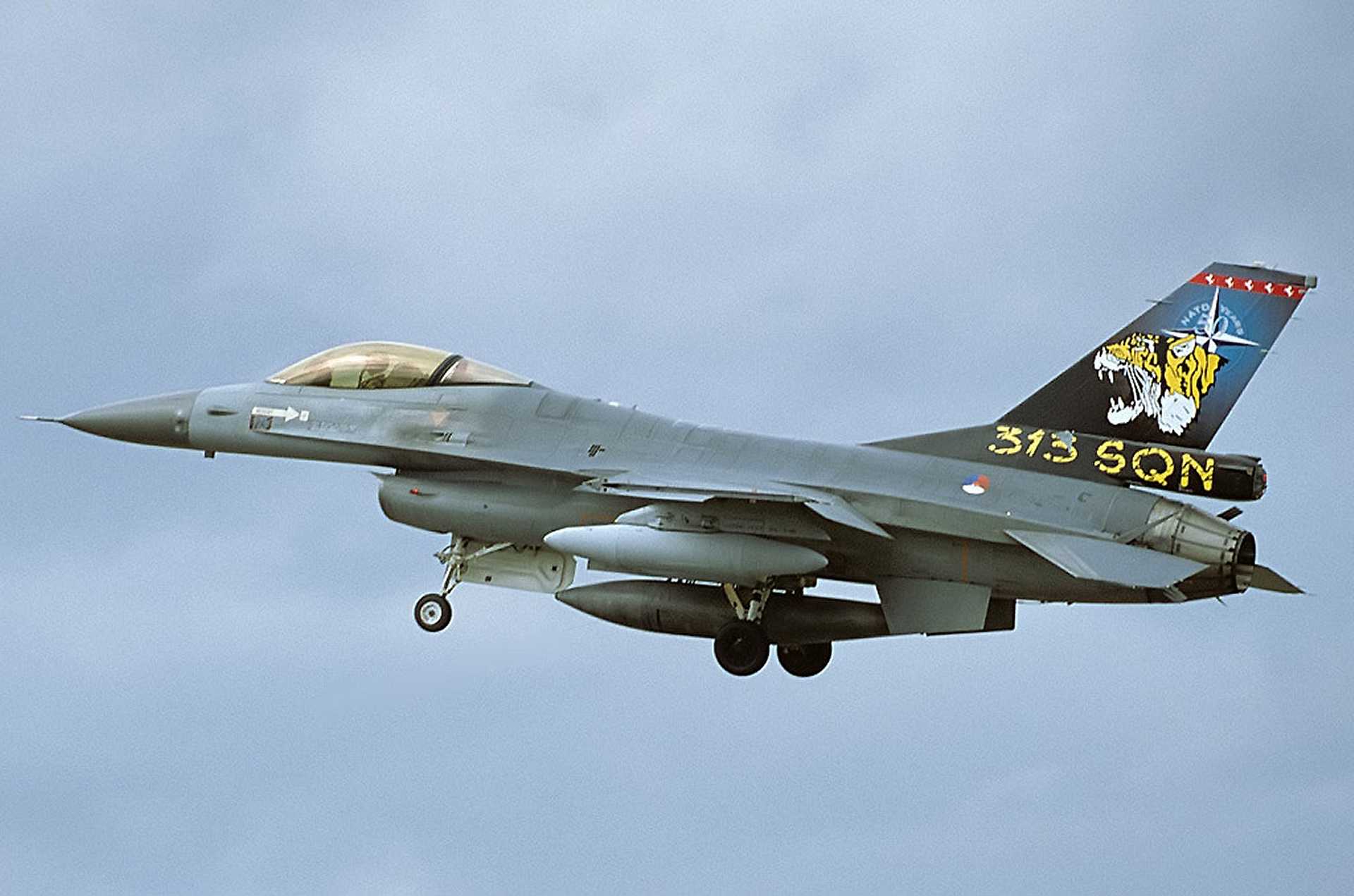Flash News: Netherlands to Deliver New Batch of F-16 fighter jets to Ukraine in 2025

{loadposition bannertop}
{loadposition sidebarpub}
On January 31, 2025, Ukrainian Defense Minister Rustem Umerov confirmed that the Netherlands will deliver another batch of F-16 fighter jets to Ukraine this year. The announcement followed a meeting in The Hague with Dutch Defense Minister Ruben Brekelmans, during which both officials discussed strengthening Ukraine’s air capabilities and ongoing training programs for Ukrainian pilots and technicians.Follow Army Recognition on Google News at this link
An F-16 fighter jet from the Dutch Air Force, part of NATO’s ongoing support to Ukraine, performs a demonstration flight. This multi-role aircraft, with upgraded avionics and weapons systems, plays a key role in bolstering Ukraine’s air defense capabilities against Russian invasion. (Picture source: Wikimedia)
The Netherlands has been a key supporter in Ukraine’s efforts to bolster its air defense, having already delivered U.S.-made F-16s, with the first jets arriving in August 2024. These aircraft, F-16A/B Block 20 MLU (Mid-Life Update) models, have significantly improved Ukraine’s ability to counter Russian air threats, particularly missile and drone attacks. The Block 20 MLU variant features upgraded radar systems, avionics, and weapons compatibility, making them capable of performing advanced air-to-air and air-to-ground missions.
The supply of F-16s to Ukraine is part of a broader coalition effort by NATO allies. The initial pledge to provide 42 F-16 Fighting Falcons was made public on August 20, 2023, with deliveries planned to begin in 2024. Since then, additional commitments from NATO members, including the Netherlands, Denmark, Norway, and Belgium, have increased the total number of pledged F-16s to approximately 65 aircraft.
Some of these jets have been retained in the Netherlands to support pilot training programs. Training is taking place at Volkel Air Base, where Ukrainian pilots, engineers, and technicians receive hands-on experience with the aircraft. These programs are expected to continue throughout 2025, ensuring that Ukrainian personnel are fully prepared to operate and maintain the fighter jets.
In addition to the aircraft, the Netherlands has pledged significant financial and logistical support to ensure the operational readiness of Ukraine’s F-16 fleet. This includes €150 million worth of F-16 munitions purchased from manufacturers, €300 million worth of additional F-16 munitions pledged in July 2024, and €80 million for maintenance equipment and materials, including air-to-air missiles, pledged in September 2024. These investments aim to ensure that Ukraine’s newly acquired fighter jets are fully equipped and maintained for both offensive and defensive missions.
The addition of more F-16s is vital for Ukraine as it continues to face Russian air superiority. The Ukrainian Air Force has been operating older Soviet-era aircraft, which struggle to compete with modern Russian fighters and advanced air defense systems. The F-16s will provide a major boost to Ukraine’s air combat capabilities, allowing them to intercept Russian aircraft, destroy cruise missiles, and better defend strategic infrastructure from aerial threats. Moreover, the integration of F-16s into Ukraine’s Air Force aligns with its long-term goal of NATO interoperability. The ongoing training and technical support from European allies are accelerating Ukraine’s transition to Western-standard military aviation, ensuring that its pilots and engineers can operate and maintain the jets effectively for years to come.
The F-16A/B Block 20 MLU is an upgraded version of the original F-16A/B models, incorporating modernized avionics, a more powerful AN/APG-66(V)2 radar system, and improved weapons compatibility. These modifications allow the aircraft to use advanced AIM-120 AMRAAM air-to-air missiles and precision-guided munitions, significantly increasing their combat effectiveness. The MLU program also improves cockpit displays, navigation systems, and electronic warfare capabilities, ensuring the aircraft remain competitive against newer-generation fighters.
Additionally, the Block 20 MLU variant benefits from structural reinforcements and updated flight control software, extending the operational lifespan of the jets. This makes them well-suited for Ukraine’s needs, as they provide a cost-effective yet highly capable multi-role fighter that can perform air superiority missions, ground attack operations, and reconnaissance. With these enhancements, the F-16A/B Block 20 MLU remains a formidable asset in modern aerial warfare, providing Ukraine with a crucial tool to counter Russian threats in the ongoing conflict.
This new delivery of F-16s represents a critical phase in Ukraine’s defense strategy and underscores NATO’s continued commitment to supporting Kyiv in its fight against Russian aggression. With additional aircraft, advanced weaponry, and extensive training programs, Ukraine’s air defense forces are set to significantly enhance their effectiveness on the battlefield in 2025.

{loadposition bannertop}
{loadposition sidebarpub}
On January 31, 2025, Ukrainian Defense Minister Rustem Umerov confirmed that the Netherlands will deliver another batch of F-16 fighter jets to Ukraine this year. The announcement followed a meeting in The Hague with Dutch Defense Minister Ruben Brekelmans, during which both officials discussed strengthening Ukraine’s air capabilities and ongoing training programs for Ukrainian pilots and technicians.
Follow Army Recognition on Google News at this link
An F-16 fighter jet from the Dutch Air Force, part of NATO’s ongoing support to Ukraine, performs a demonstration flight. This multi-role aircraft, with upgraded avionics and weapons systems, plays a key role in bolstering Ukraine’s air defense capabilities against Russian invasion. (Picture source: Wikimedia)
The Netherlands has been a key supporter in Ukraine’s efforts to bolster its air defense, having already delivered U.S.-made F-16s, with the first jets arriving in August 2024. These aircraft, F-16A/B Block 20 MLU (Mid-Life Update) models, have significantly improved Ukraine’s ability to counter Russian air threats, particularly missile and drone attacks. The Block 20 MLU variant features upgraded radar systems, avionics, and weapons compatibility, making them capable of performing advanced air-to-air and air-to-ground missions.
The supply of F-16s to Ukraine is part of a broader coalition effort by NATO allies. The initial pledge to provide 42 F-16 Fighting Falcons was made public on August 20, 2023, with deliveries planned to begin in 2024. Since then, additional commitments from NATO members, including the Netherlands, Denmark, Norway, and Belgium, have increased the total number of pledged F-16s to approximately 65 aircraft.
Some of these jets have been retained in the Netherlands to support pilot training programs. Training is taking place at Volkel Air Base, where Ukrainian pilots, engineers, and technicians receive hands-on experience with the aircraft. These programs are expected to continue throughout 2025, ensuring that Ukrainian personnel are fully prepared to operate and maintain the fighter jets.
In addition to the aircraft, the Netherlands has pledged significant financial and logistical support to ensure the operational readiness of Ukraine’s F-16 fleet. This includes €150 million worth of F-16 munitions purchased from manufacturers, €300 million worth of additional F-16 munitions pledged in July 2024, and €80 million for maintenance equipment and materials, including air-to-air missiles, pledged in September 2024. These investments aim to ensure that Ukraine’s newly acquired fighter jets are fully equipped and maintained for both offensive and defensive missions.
The addition of more F-16s is vital for Ukraine as it continues to face Russian air superiority. The Ukrainian Air Force has been operating older Soviet-era aircraft, which struggle to compete with modern Russian fighters and advanced air defense systems. The F-16s will provide a major boost to Ukraine’s air combat capabilities, allowing them to intercept Russian aircraft, destroy cruise missiles, and better defend strategic infrastructure from aerial threats. Moreover, the integration of F-16s into Ukraine’s Air Force aligns with its long-term goal of NATO interoperability. The ongoing training and technical support from European allies are accelerating Ukraine’s transition to Western-standard military aviation, ensuring that its pilots and engineers can operate and maintain the jets effectively for years to come.
The F-16A/B Block 20 MLU is an upgraded version of the original F-16A/B models, incorporating modernized avionics, a more powerful AN/APG-66(V)2 radar system, and improved weapons compatibility. These modifications allow the aircraft to use advanced AIM-120 AMRAAM air-to-air missiles and precision-guided munitions, significantly increasing their combat effectiveness. The MLU program also improves cockpit displays, navigation systems, and electronic warfare capabilities, ensuring the aircraft remain competitive against newer-generation fighters.
Additionally, the Block 20 MLU variant benefits from structural reinforcements and updated flight control software, extending the operational lifespan of the jets. This makes them well-suited for Ukraine’s needs, as they provide a cost-effective yet highly capable multi-role fighter that can perform air superiority missions, ground attack operations, and reconnaissance. With these enhancements, the F-16A/B Block 20 MLU remains a formidable asset in modern aerial warfare, providing Ukraine with a crucial tool to counter Russian threats in the ongoing conflict.
This new delivery of F-16s represents a critical phase in Ukraine’s defense strategy and underscores NATO’s continued commitment to supporting Kyiv in its fight against Russian aggression. With additional aircraft, advanced weaponry, and extensive training programs, Ukraine’s air defense forces are set to significantly enhance their effectiveness on the battlefield in 2025.






